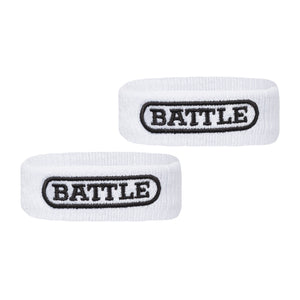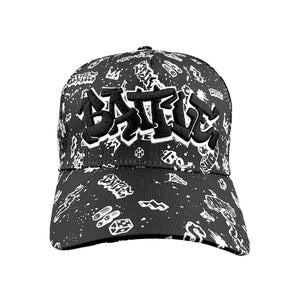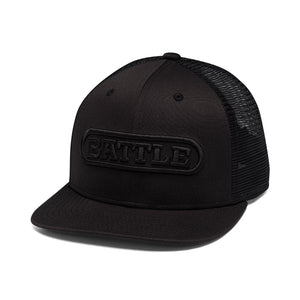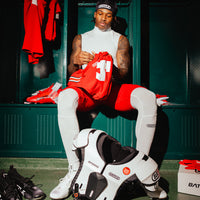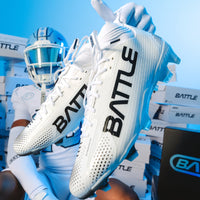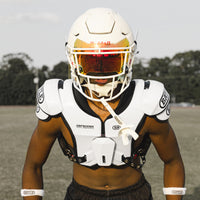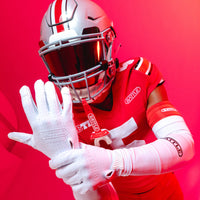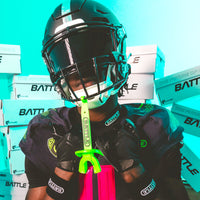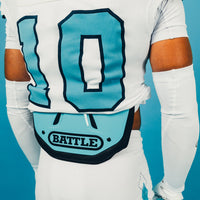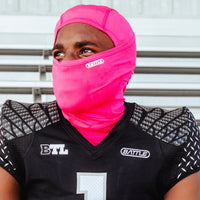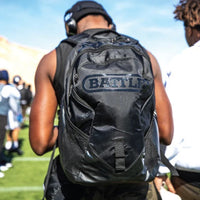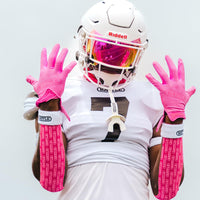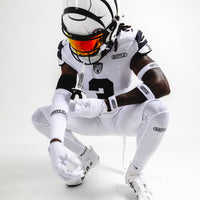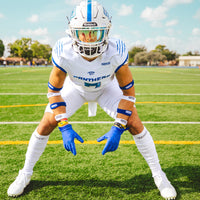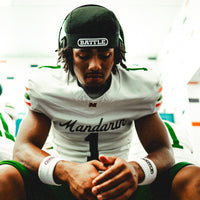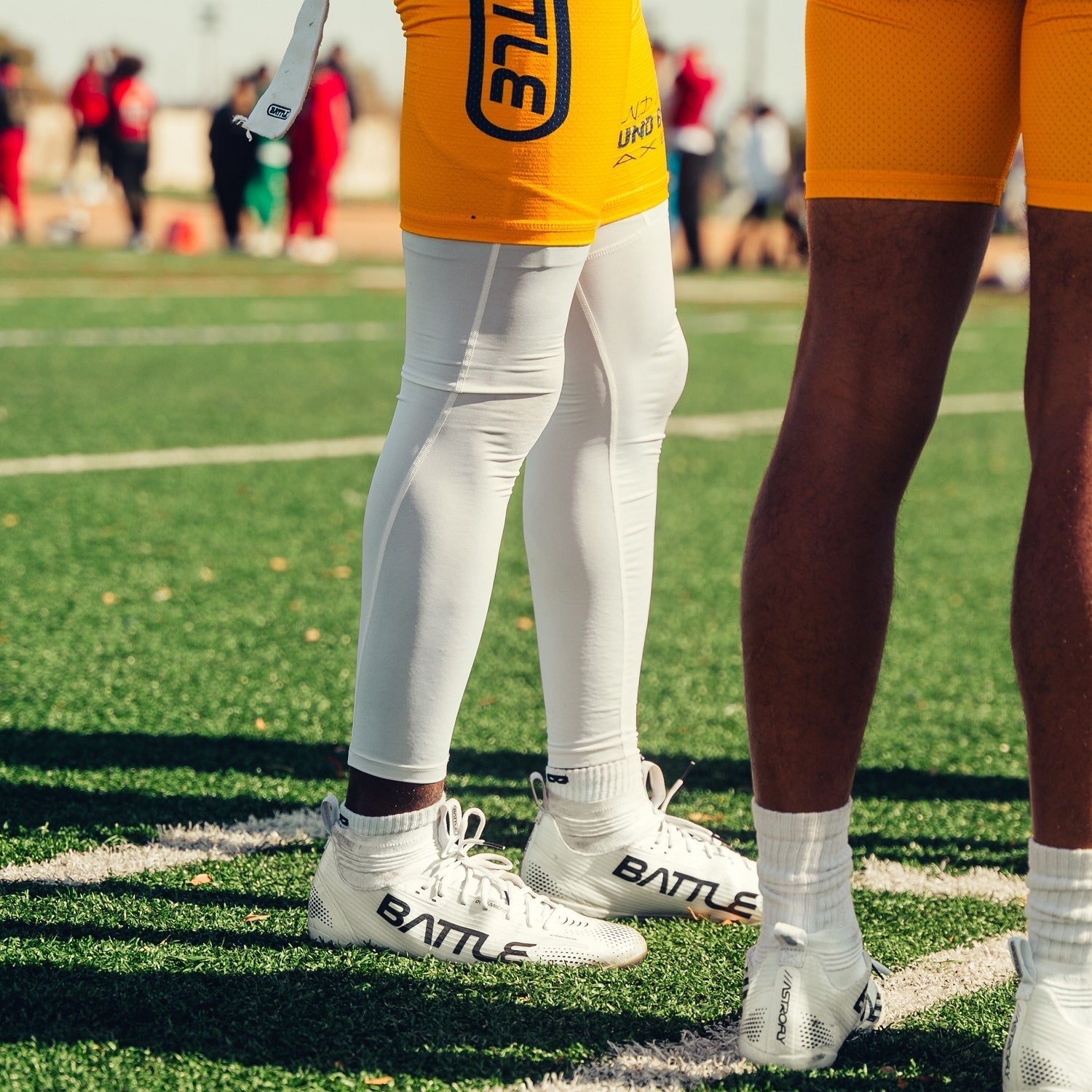When you suit up for football, every layer matters—and that includes what goes under your pads. Compression gear isn’t just something to wear because it looks sharp (though let’s be real, it does add to the football drip). It’s a core part of your performance setup that can directly impact how you move, recover, and feel on the field.
From compression tights that support your legs on every sprint, to compression shirts that reduce skin friction under pads, this football gear is all about unlocking your best game-day performance. Let’s break down how to choose the right compression wear for football so you can stay comfortable, protected, and locked in.

Why Compression Gear Matters in Football
Whether you’re grinding through a summer workout or lining up under the lights, football compression apparel delivers real performance benefits.
Here’s why football players swear by it:
- Reduces muscle fatigue and supports recovery - Compression helps improve circulation, which can reduce muscle soreness and keep your legs fresher deeper into the game.
- Manages sweat and temperature - Most compression gear is made with moisture-wicking fabrics that keep you dry and cool, even under pads in full contact.
- Protects your skin -Tight-fitting compression reduces skin irritation, prevents chafing, and helps defend against turf burn when you hit the ground hard.
Bottom line: compression gear isn’t just a look—it’s a performance layer that works for your body while you focus on making plays.
Key Types of Compression Gear for Football Players
Not all compression is the same. Depending on your position, preferences, and level of play, different pieces serve different purposes.
Compression Shirts
A must-have base layer under your football shoulder pads.
- Help regulate body temperature during intense training or games.
- Minimize skin irritation and reduce friction under pads.
- Offer light upper body muscle support to improve comfort and reduce fatigue.
- Available in sleeveless, short-sleeve, or long-sleeve depending on your position and climate.
Looking for your go-to compression shirt? Check out the Mock Neck Pro Short Sleeve Compression Shirt—engineered for serious athletes who want a sleek, locked-in fit with added neck coverage and moisture-wicking performance. It’s clean, comfortable, and built for full-contact days.
For added protection with full mobility, the Integrated Padded Compression Top takes it up a level with built-in memory foam padding in the ribs and shoulders.
Compression Pants and Girdles
These cover your lower body and often include integrated padding for your hips, thighs, and knees. You can choose from full-length compression tights, ¾ leggings, or padded girdles depending on your play style. These can help in:
- Stabilizing leg muscles and reduce post-game soreness.
- Reducing skin irritation under football pants while keeping muscles warm and ready.
Need elite-level lower body protection? The Battle Integrated Padded Compression Girdle brings it all together—lightweight memory foam padding, compression support, and breathable mesh zones to keep you cool. It’s designed for serious football players who want performance, comfort, and protection in one essential piece.
Compression Arm Sleeves
A go-to for QBs, receivers, and linemen.
- Defend your arms from turf burn, minor abrasions, and sun exposure.
- Can promote circulation and reduce muscle fatigue.
- Some versions include grip-enhancing elements to help with ball control.
Compression Shorts
These are usually worn under pants or girdles for added core support.
- Keep your hip flexors, glutes, and quads warm and engaged.
- Help prevent chafing in high-movement areas.
- Great for training sessions or pairing with other compression clothing.
Look no further, the Battle Hockey Compression Shorts are built to move with you. It features a locked-in fit, moisture-wicking fabric, and strategic muscle support. Perfect for training, game day, or layering under your girdle, these shorts are battle-tested and built for serious players like you.
How to Choose the Right Fit and Material
When it comes to compression wear, fit is everything. You want your gear to feel secure, but not restrictive. Here are some points to consider:
Snug but Not Restrictive
- Compression gear should fit tightly to your body without cutting off circulation or limiting your range of motion.
- You should be able to sprint, cut, and lift comfortably while wearing compression.
Moisture-Wicking Fabric
- Look for compression made from breathable, sweat-wicking fabrics like polyester blends or stretch mesh.
- This helps regulate body temperature, especially under pads during hot practices or workouts.
Seam Placement and Stitching
- Go for flatlock seams that reduce rubbing and irritation.
- If your gear bunches or has bulky seams, it’s going to dig into your skin—especially during long games.

Matching Compression Gear to Your Position
Different positions demand different kinds of protection, mobility, and muscle support. Here’s how to match your compression game to your role on the field.
Linemen
- Choose full-length pants and long-sleeve football compression shirts to cover more skin and reduce abrasion during heavy contact.
- Look for durable fabrics and compression tops with extra padding in shoulders or ribs.
- Consider compression socks or calf sleeves to support lower-leg recovery after trench battles.
Skill Positions (WR, DB, QB)
- Go for lightweight and flexible gear that keeps you moving fast.
- Sleeveless compression tops and ¾ compression tights keep you cool while offering muscle support.
- Look for low-profile seams to reduce friction under pads and avoid any restrictions while cutting or throwing.
Running Backs and Linebackers
- Balance is key, freedom to move, plus enough protection.
- Use padded girdles, compression leggings, or long-sleeve compression shirts to help reduce impact injuries without giving up flexibility.
- These roles are physical, so choose compression that keeps up with every collision.
How to Layer Compression Gear with Pads
Your compression clothing should act as a second skin, not a distraction.
- Start with your compression top and bottoms, then layer on your football pads and uniform.
- Good compression helps keep your pads in place, reduces slippage, and minimizes chafing during movement.
- Test your full setup during practice, not just on game day, to make sure nothing shifts, bunches, or rides up.
- If it feels too tight under your pads, try sizing up in compression or picking more breathable fabrics.
Stay Ready with Battle Sports Compression Gear
At Battle Sports, we don’t do average. Our compression gear is engineered for performance—from the training ground to the championship field.
Whether you’re a lineman who needs padded coverage or a receiver who values flexibility and grip, our gear is built to help you move faster, recover better, and play harder. With moisture-wicking fabrics, snug fits, and tech-enhanced design, we’ve created compression that’s as tough and dynamic as the athletes wearing it.
Explore compression shirts, tights, shorts, and sleeves built for every position and play style. Because when you start with the right base layer, everything else falls into place.


